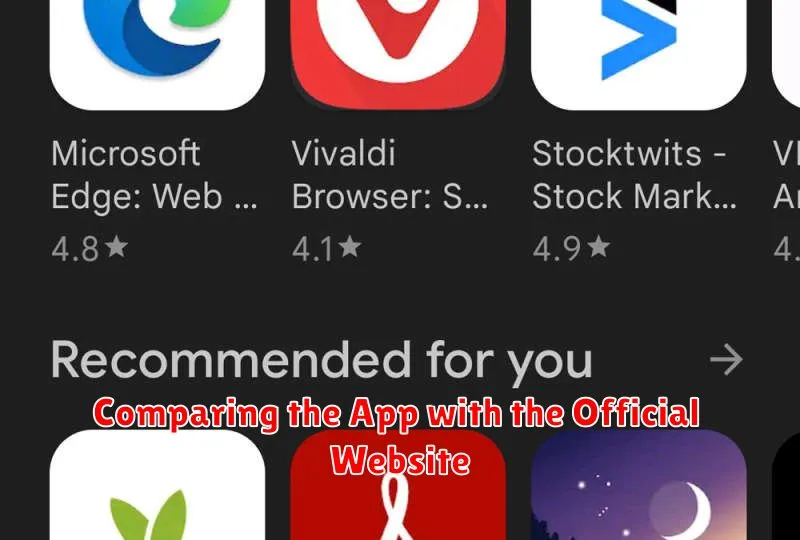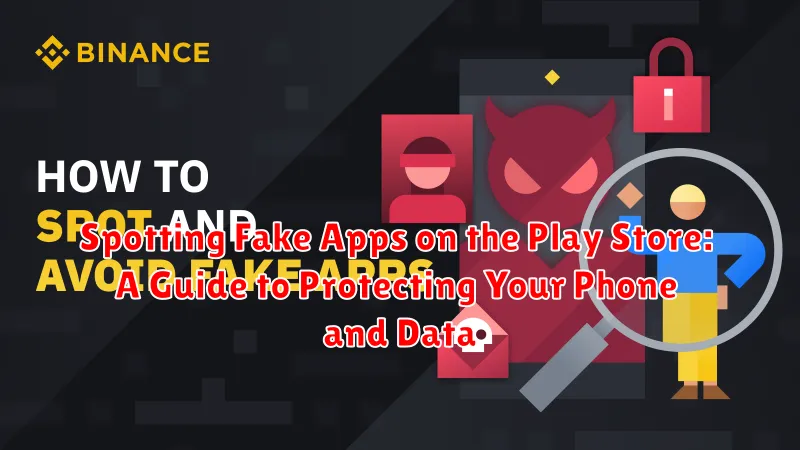The Google Play Store, while generally a safe haven for Android apps, isn’t entirely immune to malicious infiltrators. Fake apps, disguised as legitimate software, pose a serious threat to your phone and data. These deceptive imitations can steal your personal information, install malware, display intrusive ads, and even incur unwanted charges. Learning how to spot fake apps is crucial for maintaining the security of your device and protecting your privacy. This guide will provide you with essential tips and techniques to identify these counterfeit apps and safeguard your Android phone and valuable data from falling into the wrong hands. Understanding the telltale signs of a fake app can empower you to make informed decisions about what you download and install.
Protecting yourself from fake apps on the Play Store requires vigilance and a keen eye for detail. By examining app descriptions, developer information, user reviews, and requested permissions, you can significantly reduce the risk of downloading a malicious application. This guide will delve into specific red flags to watch for, offering practical advice on how to effectively analyze Android apps before installation. From suspicious download numbers to poorly written descriptions and generic icons, we’ll equip you with the knowledge necessary to identify and avoid fake apps and keep your Android phone and data secure.
Understanding the Risks of Fake Apps
Fake apps pose a serious threat to your mobile security. These deceptive applications, disguised as legitimate software, can cause significant harm to your device and compromise your personal information. Downloading and installing a fake app can expose you to a variety of risks.
Malware infections are a common consequence of installing fake apps. These apps can contain malicious code that can steal your data, corrupt your files, or even take control of your device. This can lead to financial losses, identity theft, and disruption of your device’s functionality.
Data breaches are another substantial risk. Fake apps often request excessive permissions, granting them access to sensitive information like contacts, location, and even financial data. This information can be harvested and misused by malicious actors.
Furthermore, some fake apps are designed to display intrusive advertisements that disrupt user experience and can even lead to further malware infections. These ads can be difficult to close and can consume significant battery life and data.
Checking App Ratings and Reviews
App ratings and reviews can offer valuable insights into the legitimacy and quality of an app. Pay close attention to both the average rating and the content of the reviews themselves.
A high average rating doesn’t always guarantee an app’s safety. Fake apps can sometimes amass numerous positive, yet fabricated, reviews. Therefore, it’s crucial to read through several reviews, focusing on the specific details provided by users.
Look for patterns in the reviews. Do multiple users report similar issues or suspicions? Are the reviews overly generic or do they provide specific examples of app functionality? Genuine reviews often discuss specific features, both positive and negative, while fake reviews tend to be vague and overly enthusiastic.
Be wary of apps with overwhelmingly positive reviews coupled with a suspiciously low download count. This can be an indicator of manipulated ratings. Similarly, a large number of negative reviews highlighting similar problems should raise a red flag.
Scrutinizing App Permissions
App permissions dictate what aspects of your device and data an app can access. Fake apps often request excessive or irrelevant permissions to gain broader access than necessary. Carefully review the permissions an app requests before installation.
Ask yourself if the requested permissions make sense in the context of the app’s functionality. For example, a simple calculator app shouldn’t require access to your contacts or location. A flashlight app shouldn’t need access to your microphone. These are potential red flags.
If an app’s required permissions seem excessive or suspicious, reconsider installing it. The potential risks to your privacy and security might outweigh the app’s benefits.
Examining the Developer’s Profile
A key step in identifying potentially fake apps involves scrutinizing the developer’s profile. Check the developer’s name. Does it seem legitimate or oddly generic? A reputable developer usually has a recognizable name or company associated with their apps.
Investigate the developer’s website. A legitimate developer will typically have a website providing more information about their company and products. The absence of a website, or a poorly designed and unprofessional one, could be a warning sign.
Look at other apps by the same developer. Do they have a consistent history of publishing quality apps? Or do the other apps also seem suspicious or poorly made? A pattern of low-quality or fake apps under a single developer is a major red flag.
Pay attention to the developer’s contact information. Is an email address provided? Does it look professional? Legitimate developers usually provide clear and accessible contact information.
Looking for Red Flags in App Descriptions
The app description itself can offer valuable clues about its authenticity. Poor grammar and spelling errors are often a strong indicator of a hastily created fake app. Look for awkward phrasing, excessive use of keywords, or descriptions that don’t quite make sense. Legitimate apps generally have well-written and informative descriptions.
Exaggerated claims and promises are another warning sign. Be wary of apps that guarantee unrealistic results, like instant weight loss or significant financial gains. If it sounds too good to be true, it probably is.
Pay close attention to the information provided about the app’s functionality. Does it clearly explain what the app does and how it works? Vague or overly generic descriptions might indicate a lack of genuine purpose, which could be a red flag for a fake app.
Comparing the App with the Official Website

One crucial step in identifying fake apps involves cross-referencing information with the official website of the app’s supposed developer. If an app claims to be from a specific company or brand, visit that company’s legitimate website. Look for direct links to their official app on the Google Play Store.
Pay close attention to discrepancies. Does the official website acknowledge the existence of the app you’re investigating? If not, that’s a major red flag. Compare the app’s description, logo, and screenshots with the official website’s presentation of the app. Inconsistencies in these areas can indicate a fake.
Additionally, verify the developer’s name listed on the Play Store against the information provided on the official website. Misspellings or variations in the developer’s name are common signs of fraudulent apps attempting to mimic legitimate ones.
Using Virus Scanners and App Security Tools
Virus scanners and app security tools can provide an additional layer of defense against malicious apps. These tools scan your device for potentially harmful software, including apps that might be disguised as legitimate ones. They compare the app’s code against a database of known malware signatures and flag any suspicious activity.
Several reputable security apps are available on the Play Store. Research and choose a well-regarded app from a trusted developer. These apps typically perform regular scans and offer real-time protection, alerting you to any potential threats before they can cause damage.
While these tools are helpful, they aren’t foolproof. Malicious apps constantly evolve, and sometimes new threats emerge before security tools can identify them. Therefore, it’s essential to combine the use of these tools with other safety practices, such as carefully reviewing app details and checking developer information.
Reporting Suspicious Apps to Google Play

If you encounter a potentially harmful or fake application on the Google Play Store, reporting it can help protect other users. Reporting suspicious apps is a crucial step in maintaining the integrity of the platform.
To report an app, open the app’s page on the Google Play Store. Locate the three-dot menu usually found in the upper right corner. Tap on it and select “Flag as inappropriate.” You will then be presented with several options describing why you are reporting the app. Choose the option that most accurately reflects your concern (e.g., “Harmful to device or data,” “Impersonation or deceptive behavior”).
Provide any additional information that might be helpful, such as specific examples of the app’s suspicious behavior. This will help Google investigate the app more efficiently. After submitting the report, Google will review the app based on the information provided.

